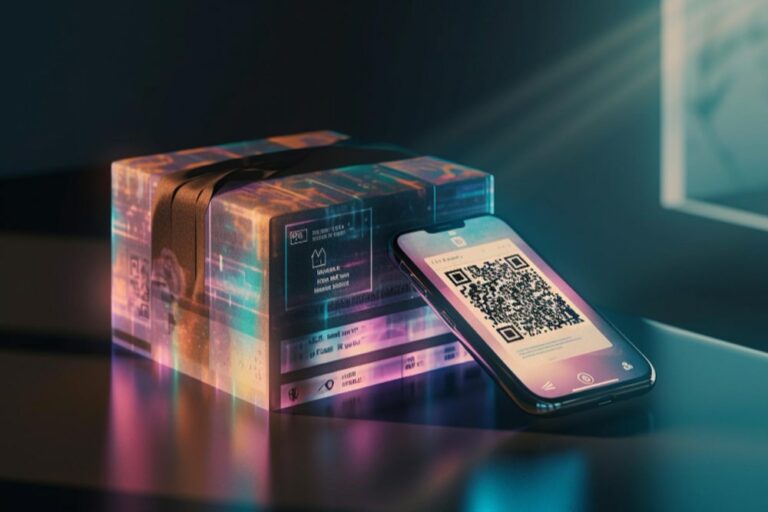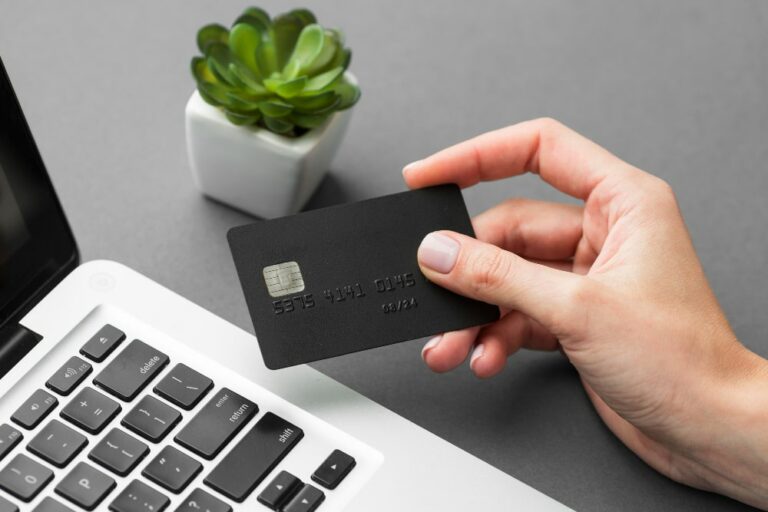In an era marked by digital convenience and rapid technological advancements, the way we conduct financial transactions has undergone a profound transformation. Traditional methods of payment, such as cash and physical cards, have been eclipsed by the rise of two digital titans: contactless payments and mobile wallets. As we increasingly embrace the touchless world of finance, a paramount question emerges—Which of these digital payment methods is safer, and why?
In this thought-provoking exploration of “Contactless Payments vs. Mobile Wallets: Which Is Safer and Why?” we embark on a journey to unravel the intricacies of these two payment paradigms. While both promise convenience and security, they do so in distinctive ways. With the specter of data breaches and cyber threats looming ever larger, the safety of our financial transactions has never been more crucial. This article aims to decode the security features, advantages, and potential vulnerabilities of contactless payments and mobile wallets, equipping you with the knowledge to make informed choices in the digital payment landscape.
As we delve deeper into this discourse, we’ll dissect the technology, examine the layers of security, and navigate the practicalities of each method. We’ll explore scenarios where one might offer an advantage over the other, and ultimately, empower you to determine which path aligns better with your needs and priorities. So, fasten your digital seatbelt, for we are about to embark on a journey through the corridors of financial technology, where the question of safety takes center stage in the ever-evolving drama of modern payments.
Contactless Payments – The Pros and Cons:
Contactless payments have swiftly become a ubiquitous feature of the modern payment landscape. These transactions, characterized by the simple act of tapping a card or mobile device on a reader, offer a myriad of advantages but also come with their own set of considerations.
1. Convenience and Speed:
- Pros: Contactless payments are renowned for their sheer convenience and speed. With a swift tap, users can complete transactions in seconds, making them ideal for quick purchases, such as grabbing a coffee or boarding public transportation.
- Cons: The speed can sometimes lead to unintended transactions, especially in crowded places where multiple readers are present. Users need to be mindful of potential accidental taps.
2. Reduced Physical Contact:
- Pros: Contactless payments gained significant traction during the global health crisis as they reduce the need for physical contact between individuals and payment terminals, contributing to improved hygiene and safety.
- Cons: There may still be concerns about hygiene, especially when shared payment terminals are involved. Regular cleaning and sanitization are essential.
3. Security Measures:
- Pros: Contactless payments incorporate robust security measures. Transactions are encrypted, and sensitive card information is hidden, reducing the risk of data theft. Tokenization technology further safeguards transactions.
- Cons: While contactless payments are generally secure, there is a remote possibility of card skimming, where malicious actors attempt to intercept card data. However, these instances are relatively rare and continue to decline due to enhanced security.
4. Spending Limits:
- Pros: Many contactless transactions have spending limits, which vary by region and card issuer. These limits ensure that even if a card is lost or stolen, the potential financial loss is limited.
- Cons: The spending limits can be a drawback for users making larger purchases. For high-value transactions, users might need to revert to traditional chip-and-PIN transactions.
5. User Vigilance:
- Pros: Contactless payments encourage users to stay vigilant about their transactions. Periodic account checks and monitoring for any unauthorized transactions are good practices.
- Cons: Users need to be cautious about potential card clashes, where multiple contactless cards in a wallet or purse inadvertently make payments. Organizing cards or using protective sleeves can mitigate this risk.
6. Global Acceptance:
- Pros: Contactless payments have achieved global acceptance, making them suitable for travelers. Users can tap their cards or devices in various countries, often without the need for currency conversion.
- Cons: In some regions, contactless infrastructure may not be as prevalent, limiting its usability. Travelers should check the compatibility of contactless payments at their destination.
Contactless payments have undeniably streamlined the payment process, offering a secure, quick, and hygienic way to make everyday purchases. While they come with certain considerations, such as accidental taps or card skimming, the benefits of convenience, speed, and enhanced security make them a compelling choice for many users, particularly in a world that increasingly values touchless interactions.
Mobile Wallets – The Advantages and Challenges:
Mobile wallets have emerged as a powerful force in the realm of digital payments, offering a versatile and secure alternative to traditional payment methods. As we delve into the world of mobile wallets, we find a wealth of advantages, coupled with a few notable challenges.
1. Enhanced Security Features:
- Advantages: Mobile wallets are known for their advanced security measures. Many require biometric authentication, such as fingerprint recognition or facial scans, to access and authorize transactions. This robust security significantly reduces the risk of unauthorized use.
- Challenges: Users must ensure their mobile devices are secure, often through device lock features. The loss or theft of a smartphone can be a security concern, but remote data wiping can mitigate this risk.
2. Convenience of Storing Multiple Cards:
- Advantages: Mobile wallets allow users to store multiple payment cards, loyalty cards, and even boarding passes in one digital space. This consolidation simplifies the payment process and reduces the need for physical cards.
- Challenges: Users need to manage their digital wallet’s contents, ensuring they keep it up to date and organized. Overcrowding the wallet with unused cards can lead to a cluttered digital experience.
3. Compatibility and Device Limitations:
- Advantages: Mobile wallets can be used on a wide range of smartphones and tablets, making them accessible to a broad user base. They are often compatible with both iOS and Android platforms.
- Challenges: Not all mobile devices are equipped with the necessary technology to support mobile wallets. Additionally, some users may encounter compatibility issues with certain point-of-sale terminals or payment apps.
4. Privacy and Data Protection:
- Advantages: Mobile wallets prioritize user privacy and data protection. Card information is tokenized, meaning that actual card details are hidden during transactions, reducing the risk of data breaches.
- Challenges: Users must be cautious about granting permissions to mobile wallet apps, ensuring they only provide necessary access. Reviewing app permissions and using reputable apps can help maintain privacy.
5. Online and In-Store Versatility:
- Advantages: Mobile wallets offer versatility, enabling users to make payments in physical stores, online, and within apps. They seamlessly adapt to various payment scenarios.
- Challenges: While mobile wallets are versatile, not all merchants accept them. Users should verify acceptance before relying solely on their mobile wallets for payments.
6. Rewards and Loyalty Programs:
- Advantages: Some mobile wallets integrate rewards and loyalty programs, allowing users to earn cashback, points, or discounts on their transactions.
- Challenges: Managing multiple rewards and loyalty programs within different wallet apps can become cumbersome. Users should stay organized to maximize benefits.
Mobile wallets have carved a niche as a secure and flexible means of making digital payments. While they offer enhanced security and versatility, users should be mindful of device security, app permissions, and compatibility to make the most of their mobile wallet experience. With the right precautions, mobile wallets can streamline payments and offer peace of mind in an increasingly digital world.
Security Measures in Contactless Payments:
The widespread adoption of contactless payments has been fueled, in part, by the robust security measures in place to protect both consumers and their financial transactions. As we delve into the layers of security surrounding contactless payments, it becomes evident that these systems have evolved to provide a high level of protection.
1. Tokenization Technology:
- Tokenization: Contactless payments employ tokenization, a security process that substitutes sensitive card information with unique tokens. When a payment is initiated, the token is used instead of the actual card number. Even if intercepted, these tokens hold no value, making it extremely difficult for malicious actors to gain access to usable card data.
2. Encryption of Data:
- Data Encryption: Contactless transactions are encrypted, ensuring that the payment information transferred between the card or device and the payment terminal is scrambled and unreadable to potential eavesdroppers. Encryption adds an extra layer of security during the data transmission process.
3. Contactless Card Chip:
- EMV Chip: Many contactless cards have an EMV chip embedded in them, similar to traditional chip-and-PIN cards. This chip enhances security by verifying the card’s authenticity and generating dynamic codes for each transaction. These codes cannot be used for subsequent transactions, further safeguarding against fraud.
4. Transaction Limits:
- Spending Limits: Contactless payments often come with predefined spending limits. If a transaction exceeds this limit, users are required to enter their PIN, adding an additional layer of authentication. This feature limits potential financial loss in case of a lost or stolen card.
5. User Authentication:
- Biometric Verification: In some cases, contactless payments may require biometric authentication, such as fingerprint recognition or facial scans. This ensures that only the authorized cardholder can initiate and authorize transactions, significantly reducing the risk of unauthorized use.
6. Device and Card Authentication:
- Authentication Protocols: Contactless payments involve a series of authentication protocols between the card or device and the payment terminal. These protocols verify the legitimacy of the card and the terminal, preventing unauthorized transactions.
7. Monitoring and Alerts:
- Transaction Monitoring: Financial institutions and card providers often employ real-time transaction monitoring. Any unusual or suspicious activity triggers alerts, allowing for swift action to prevent potential fraud.
8. Regular Updates and Patches:
- Software Updates: Card issuers and payment service providers regularly update their systems to patch vulnerabilities and enhance security. It’s crucial for users to keep their cards and devices updated with the latest security patches.
9. Consumer Education:
- User Awareness: Financial institutions and card providers invest in consumer education to raise awareness about safe contactless payment practices. Users are encouraged to monitor their statements, report any suspicious activity promptly, and adopt secure behaviors.
Contactless payments have evolved to become a secure and efficient means of conducting financial transactions. The combination of tokenization, encryption, user authentication, and transaction monitoring ensures that users can confidently tap their cards and devices, knowing that their payments are protected by a robust security framework. While no system is entirely immune to threats, contactless payments represent a formidable defense against fraud and unauthorized access.
Security Features of Mobile Wallets:
Mobile wallets are celebrated not only for their convenience but also for the formidable security measures that safeguard users’ sensitive financial information. These security features have evolved to address the dynamic challenges of the digital age, providing users with peace of mind in their day-to-day transactions.
1. Biometric Authentication:
- Fingerprint Recognition and Facial Scans: One of the standout security features of mobile wallets is biometric authentication. Users can unlock their wallets and authorize transactions using their fingerprints or facial scans. This adds a layer of security that ensures only authorized users can access wallet contents.
2. Tokenization Technology:
- Tokenization: Similar to contactless payments, mobile wallets employ tokenization. When a payment is initiated, the wallet generates a unique token instead of transmitting actual card details. This token holds no intrinsic value, rendering it useless to potential attackers.
3. Device Lock and Encryption:
- Device Security: Mobile wallets encourage users to set up device locks, such as PINs, patterns, or passwords. These locks prevent unauthorized access to the device itself. Additionally, mobile devices are often encrypted, protecting stored data even if the device is lost or stolen.
4. Remote Data Wiping:
- Remote Wipe Capability: Mobile wallets often come equipped with remote data wiping capabilities. In the event of a lost or stolen device, users can remotely erase wallet data to prevent unauthorized access.
5. Multi-Factor Authentication (MFA):
- Additional Authentication Layers: Some mobile wallets offer multi-factor authentication (MFA), requiring users to provide additional verification beyond biometrics. This might involve receiving a one-time code via SMS or email.
6. Transaction Notifications:
- Real-Time Alerts: Mobile wallets typically send real-time notifications for each transaction, allowing users to promptly identify and report any unauthorized activity. This feature enhances user vigilance and security.
7. Secure Enclave Technology:
- Hardware Security: Mobile devices often include a secure enclave—a hardware-based area that stores and protects sensitive data, such as biometric information and encryption keys. This hardware-level security enhances wallet security.
8. App Permissions:
- Controlled Access: Users have control over app permissions, ensuring that mobile wallet apps only access necessary data. This helps safeguard personal information and reduce potential vulnerabilities.
9. Encrypted Transactions:
- End-to-End Encryption: Mobile wallet transactions are encrypted from end to end, ensuring that payment information remains private and secure during transmission.
10. User Education:
- Security Awareness: Mobile wallet providers invest in user education, raising awareness about safe practices. Users are encouraged to keep their devices and wallet apps updated, set strong authentication methods, and report any suspicious activity.
Mobile wallets have emerged as secure fortresses in the world of digital finance. With their robust security features, including biometric authentication, tokenization, device locks, and remote data wiping, users can confidently manage their finances and make digital payments while knowing that their personal and financial information is well-guarded against potential threats.
Making an Informed Choice – Safer Options for Different Scenarios:
In the dynamic landscape of digital payments, the choice between contactless payments and mobile wallets often hinges on specific circumstances and individual preferences. To make an informed decision regarding which option is safer for different scenarios, it’s essential to understand the strengths and weaknesses of each method.
1. In-Store Purchases:
- Contactless Payments: For quick in-store purchases where speed and convenience are paramount, contactless payments are an excellent choice. With enhanced security features like tokenization and encryption, they offer a secure option for transactions at retail outlets.
- Mobile Wallets: Mobile wallets, particularly those with biometric authentication, also excel in physical stores. Users can tap their smartphones for payments, adding an extra layer of security through biometrics.
2. Online Shopping:
- Mobile Wallets: When shopping online, mobile wallets can provide an added layer of security. They often require biometric verification, ensuring that only the authorized user can complete transactions. Tokenization further protects card information during online purchases.
- Contactless Payments: While some contactless cards can be used for online shopping, the security of mobile wallets is generally considered more robust for e-commerce transactions.
3. International Travel:
- Contactless Payments: Contactless cards are widely accepted globally, making them a convenient option for travelers. Ensure your contactless card is equipped with EMV chip technology for added security during international trips.
- Mobile Wallets: Mobile wallets can also be used abroad, but compatibility may vary depending on the destination. Ensure that your mobile wallet and the destination’s payment infrastructure align.
4. High-Value Transactions:
- Contactless Payments: For high-value transactions exceeding the contactless payment limit, contactless cards offer the security of chip-and-PIN authentication. This added layer of verification enhances security for substantial purchases.
- Mobile Wallets: Mobile wallets can handle high-value transactions, provided the user’s device and wallet app have robust security features in place, including strong authentication methods.
5. Hygiene and Contactless Interactions:
- Contactless Payments: In situations where reducing physical contact is a priority, such as during a global health crisis, contactless payments provide a touchless way to pay. They minimize the need for touching shared surfaces like payment terminals.
- Mobile Wallets: Mobile wallets share this advantage, offering touchless transactions through smartphones with biometric authentication.
6. Customized Security Preferences:
- Contactless Payments: Users who prefer simplicity and have confidence in the security of their contactless cards can continue using them, especially for low to medium-value transactions.
- Mobile Wallets: Individuals who prioritize customization and prefer multi-factor authentication can opt for mobile wallets, taking advantage of features like biometrics and app permissions.
Ultimately, the choice between contactless payments and mobile wallets often depends on the specific scenario and user preferences. Both options offer robust security measures, and individuals can tailor their choice to align with their security priorities and the nature of their transactions. By understanding the strengths of each method, users can confidently navigate the diverse landscape of digital payments while prioritizing security.




